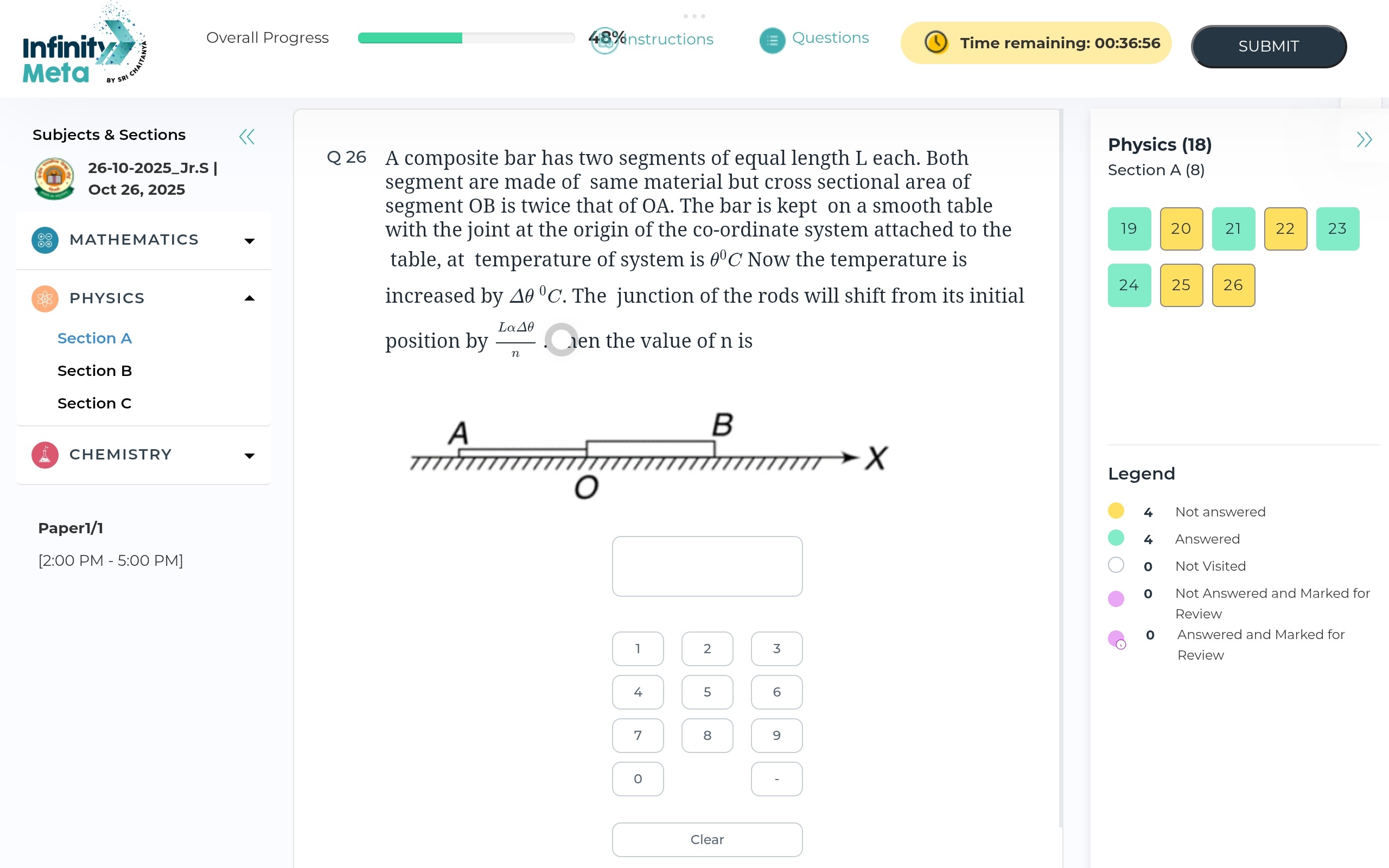Question
Question: A composite bar has two segments of equal length L each. Both segment are made of same material but ...
A composite bar has two segments of equal length L each. Both segment are made of same material but cross sectional area of segment OB is twice that of OA. The bar is kept on a smooth table with the joint at the origin of the co-ordinate system attached to the table, at temperature of system is θ°C Now the temperature is increased by Δθ °C. The junction of the rods will shift from its initial position by nLαΔθ. Then the value of n is

1
2
3
-3
-3
Solution
Let the cross-sectional area of segment OA be A and that of segment OB be 2A. Both segments have length L and are made of the same material with coefficient of linear thermal expansion α. The temperature is increased by Δθ.
The strain in segment OA is ϵOA=αΔθ+EσOA. The strain in segment OB is ϵOB=αΔθ+EσOB.
Since the bar is on a smooth table, there are no external horizontal forces. The forces at the joint must be in equilibrium. Assuming OA is to the left of the joint and OB is to the right, and σ represents tensile stress, the force exerted by OA on the joint is −σOAA and by OB is σOB(2A). For equilibrium, −σOAA+σOB(2A)=0, which gives σOA=2σOB.
Let the initial position of OA be from −L to 0 and OB be from 0 to L. The joint is initially at 0. Let the final position of the joint be xj. The displacement of the joint is related to the strain in each segment: xj=LϵOA −xj=LϵOB
Substituting these into the strain equations: Lxj=αΔθ+EσOA −Lxj=αΔθ+EσOB
Using σOA=2σOB: Lxj=αΔθ+E2σOB (1) −Lxj=αΔθ+EσOB (2)
From (2), EσOB=−Lxj−αΔθ. Substitute this into (1): Lxj=αΔθ+2(−Lxj−αΔθ) Lxj=αΔθ−L2xj−2αΔθ L3xj=−αΔθ xj=−3LαΔθ
The junction shifts from its initial position by xj. The problem states this shift is nLαΔθ. Comparing the two expressions for the shift: nLαΔθ=−3LαΔθ n=−3
